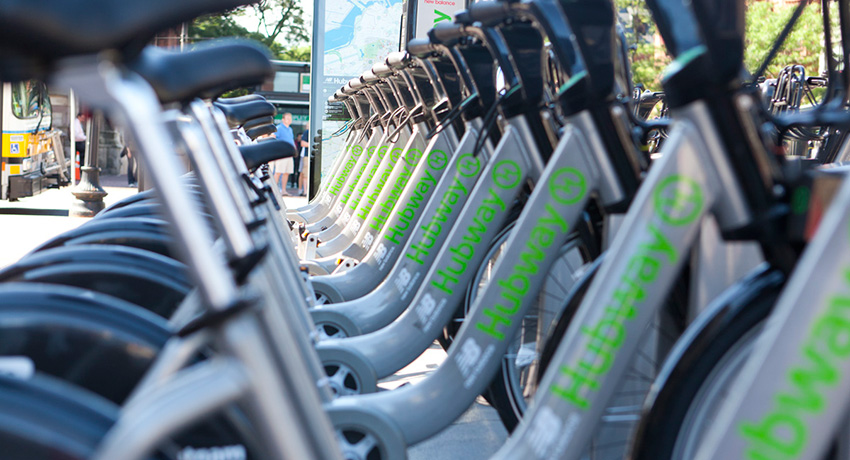Lots of Women Use Hubway, and That’s a Good Sign
Experts have long suggested that the number of women who ride bikes, when compared with the number of men, can tell us how bike-able the city is. In the absurdly bike-oriented Netherlands, women take 55 percent of bike trips. By contrast, just 32 percent of riders in a recent Boston survey were women. But statistics from Hubway, Boston’s bikeshare system, suggest that bikeshare is one way Boston is addressing the gender gap, and thus, the concerns people of all genders might have about traveling regularly by bicycle.
A 2009 story on female bicyclists in Scientific American described just why women cyclists provide a useful metric. In the story, Linda Baker wrote:
Women are considered an “indicator species” for bike-friendly cities for several reasons. First, studies across disciplines as disparate as criminology and child rearing have shown that women are more averse to risk than men. In the cycling arena, that risk aversion translates into increased demand for safe bike infrastructure as a prerequisite for riding. Women also do most of the child care and household shopping, which means these bike routes need to be organized around practical urban destinations to make a difference.
If all that’s true, city planners are looking at an equation something like: Safer infrastructure + routes that are more numerous and more practical = a more equitable gender ratio.
A new report from the League of American Bicyclists’s Women Bike initiative, highlighted in an article on The Atlantic Cities, translated the demands of potential female riders into five “C’s”: comfort, convenience, confidence, consumer products, and community. On each of those five fronts, the report concludes, a bike sharing system can go a long way toward addressing women’s concerns. Carolyn Szczepanski, director of communications for Women Bike, tells the Atlantic Cities how:
The systems make biking easy to access and convenient to multiple destinations. You can ride the bikes in regular clothes. They’re simple to adjust and comfortable to ride. And you feel like you’re part of a community when you’re on a bike-share bike. You also don’t have to deal with the frequently off-putting snobbery and machismo still found at too many bike shops.
It’s features like those that make Hubway’s membership gender gap less pronounced. Forty-seven percent of Hubway users are female, according to the report. (Of course, looking at rides taken, not number of members, as this visualization does, makes the gender ratio less rosy. Women belong to Hubway in near-equal numbers, but men are using their membership more frequently.)
Bike share doesn’t address every aspect of all five C’s. On the comfort question, for instance, the report shows that women take to their bikes in much greater numbers when things like bike lines are added. The report notes, “The number of female riders grew 115% after the installation of a bike lane on New Orleans’ South Carrollton Avenue in 2009.” Boston has, of course, added quite a bit of infrastructure in recent years, so the gender ratio will be an interesting one to watch as time goes on, especially as Hubway continues to expand.



